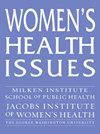“Am I Truly Invisible?”: A Qualitative Study on Black Women's Experiences of and Coping With Intersectional Invisibility in Uterine Fibroid Treatment
IF 2.5
2区 医学
Q2 PUBLIC, ENVIRONMENTAL & OCCUPATIONAL HEALTH
引用次数: 0
Abstract
Background
Black women are disproportionately burdened by uterine leiomyomas (fibroids) and face intersectional invisibility wherein their needs are ignored in health care settings due to sexism and racism. Our objective was to elucidate Black women's experiences in fibroid treatment and the strategies they use to protect their health and counter their intersectional invisibility.
Methods
We recruited participants from the Fibroids Observational Research on Genes and the Environment (FORGE) Study. We conducted semistructured individual interviews (average length 45 minutes) on Black women's experiences in fibroid treatment. We analyzed the transcripts using a thematic analytical approach and intersectionality, a critical analytical framework that allows for the examination of how sexism and racism intersect to influence health inequities.
Results
Participants were 16 Black women aged 30–52 years who were seeking fibroid treatment in Washington, DC. Our analysis revealed that participants experience gendered racism (the intersection of sexism and racism) in fibroid treatment, mirroring a historical and ongoing pattern of how Black women are treated in health care settings, and that they manage their intersectional invisibility by engaging in strategies characteristic of the superwoman schema: projecting strength, suppressing emotions, resisting being dependent, and striving to succeed despite limited resources. Participants also highlighted that their ideal fibroid-related care would include a holistic approach and social support.
Conclusions
Our findings emphasize that Black women's intersectional invisibility extends to fibroid treatment, reflecting the social-structural inequities that they face in health care settings more broadly. Attendance to Black women's voices in research and practice can help decrease their intersectional invisibility and subsequently improve their fibroid treatment and related health outcomes.
“我真的隐形吗?”黑人妇女在子宫肌瘤治疗中交叉性隐形的经历与应对。
背景:由于性别歧视和种族歧视,黑人妇女的子宫平滑肌瘤(肌瘤)负担过重,她们的需求在卫生保健机构中被忽视。我们的目的是阐明黑人妇女在子宫肌瘤治疗中的经验,以及她们用来保护自己的健康和对抗交叉隐形的策略。方法:我们招募了来自子宫肌瘤基因与环境观察研究(FORGE)研究的参与者。我们对黑人妇女的肌瘤治疗经历进行了半结构化的个人访谈(平均时长45分钟)。我们使用主题分析方法和交叉性分析了转录本,交叉性是一种关键的分析框架,可以检查性别歧视和种族主义如何交叉影响健康不平等。结果:参与者是16名年龄在30-52岁的黑人女性,她们在华盛顿特区寻求肌瘤治疗。我们的分析显示,参与者在子宫肌瘤治疗中经历了性别种族主义(性别歧视和种族主义的交集),这反映了黑人妇女在医疗保健机构中如何被对待的历史和持续模式,并且他们通过参与超人模式特征的策略来管理交叉隐形:投射力量,压抑情绪,抵制依赖,尽管资源有限但仍努力取得成功。参与者还强调,他们理想的肌瘤相关护理将包括整体方法和社会支持。结论:我们的研究结果强调,黑人妇女的交叉性不可见性延伸到肌瘤治疗,反映了她们在更广泛的医疗保健环境中面临的社会结构不平等。在研究和实践中关注黑人妇女的声音可以帮助减少她们在交叉领域的不可见性,并随后改善她们的肌瘤治疗和相关的健康结果。
本文章由计算机程序翻译,如有差异,请以英文原文为准。
求助全文
约1分钟内获得全文
求助全文
来源期刊

Womens Health Issues
Multiple-
CiteScore
4.50
自引率
6.20%
发文量
97
审稿时长
32 days
期刊介绍:
Women"s Health Issues (WHI) is a peer-reviewed, bimonthly, multidisciplinary journal that publishes research and review manuscripts related to women"s health care and policy. As the official journal of the Jacobs Institute of Women"s Health, it is dedicated to improving the health and health care of all women throughout the lifespan and in diverse communities. The journal seeks to inform health services researchers, health care and public health professionals, social scientists, policymakers, and others concerned with women"s health.
 求助内容:
求助内容: 应助结果提醒方式:
应助结果提醒方式:


